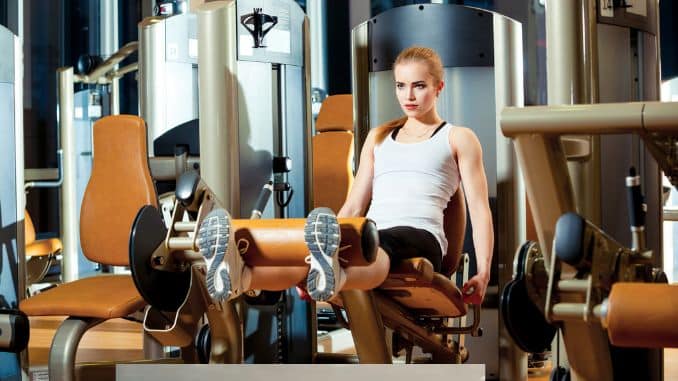Leg extensions are a common exercise used to isolate and strengthen the quadriceps, typically performed on a machine that targets the front of the thighs. While effective, many people experience pain during or after doing leg extensions, and you might be wondering, why do leg extensions hurt so much?
Leg extensions performed with improper technique or rapid movements may cause joint strain and muscle discomfort.
Understanding why leg extensions [1] can be painful, how to perform them safely, and exploring ways to prevent discomfort can help you protect your knees and still build strong legs.
Alternative exercises are also available to help you strengthen your legs without the pain.
| Causes of Leg Extension [2] | Prevention |
| Improper Form | Gradual Progression (start with lighter weights and gradually increase intensity) |
| Excessive Weight | Proper Warm-Up (warming up the legs before leg extensions) |
| Joint and Ligament | Form Correction (ensure proper form and adjust the machine to fit body measurements) Managing the knee joint angle during leg extension exercises should be a priority to improve muscle balance and reduce the risk of knee pain. (3) |
| Overuse | Stretching and Mobility (stretch before and after workouts to improve flexibility) |
| Tight Muscle | Regular Stretching and Mobility Work (incorporate dynamic and static stretching, foam rolling, or massage guns to release muscle tightness) |
Mastering the Correct Technique for Leg Extensions on the Machine
- Begin by sitting upright on the leg extension machine with your back firmly against the seat and feet hooked under the padded lever, maintaining proper alignment with your head, shoulders, hips, and legs.
- Grasp the handles at your sides for support.
- Tighten your core and slowly extend your legs forward, straightening your knees fully while keeping your upper body stable.
- Pause briefly at the top, then lower your legs back down to the starting position in a controlled motion.
Repeat this movement in 10 repetitions of 3 sets.
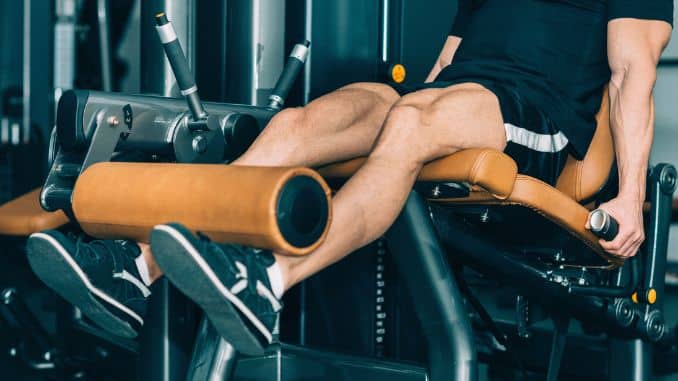
According to physiotherapists, Leg extensions primarily target the quadriceps, which play an important role in supporting knee stability and preventing re-injury.
Other Alternatives for Leg Extension Exercise
1. Squats

- Begin in a standing position with your feet wider than hip-width apart and your toes pointing slightly outward.
- Engage your core, hinge from your hips, and bend your knees to lower your seat downward.
- Keep your knees behind your toes and do not let your knees fall inward. Hold this position for several deep belly breaths, in through your nose, out through your mouth.
- Press from your heels to return to the starting position and repeat the movement.
Why it’s good: Squats are a compound exercise that works the quads, hamstrings, glutes, and core. It also engages multiple muscle groups, making it a great overall leg exercise.
2. Lunges
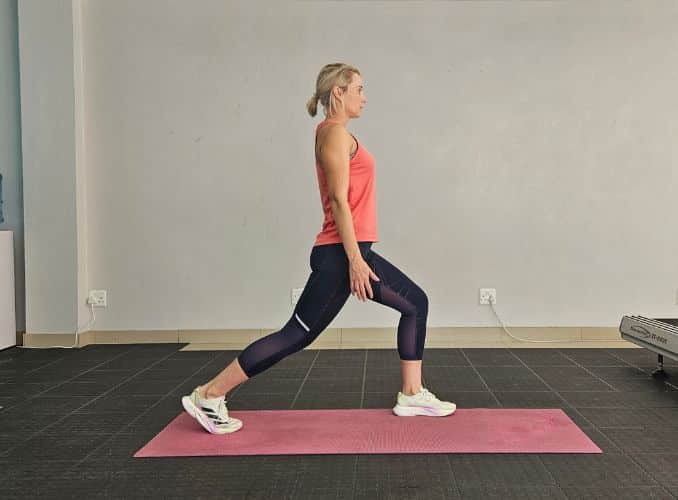
- Begin in an upright standing position with your feet hip-width apart, maintaining good alignment with your head, shoulders, hips, and legs.
- Step one foot forward and lower your hips until both knees are bent at about a 90-degree angle, with your back knee resting on the floor.
- Place your hands on your hips or at your sides for balance.
- Hold this position for several deep belly breaths, in through your nose and out through your mouth.
- Push back to the starting position and repeat the movement 10-15 times on each leg.
Why it’s good: Lunges target the quads, hamstrings, and glutes, providing a full-leg workout with a focus on balance and stability.
3. Banded Leg Press
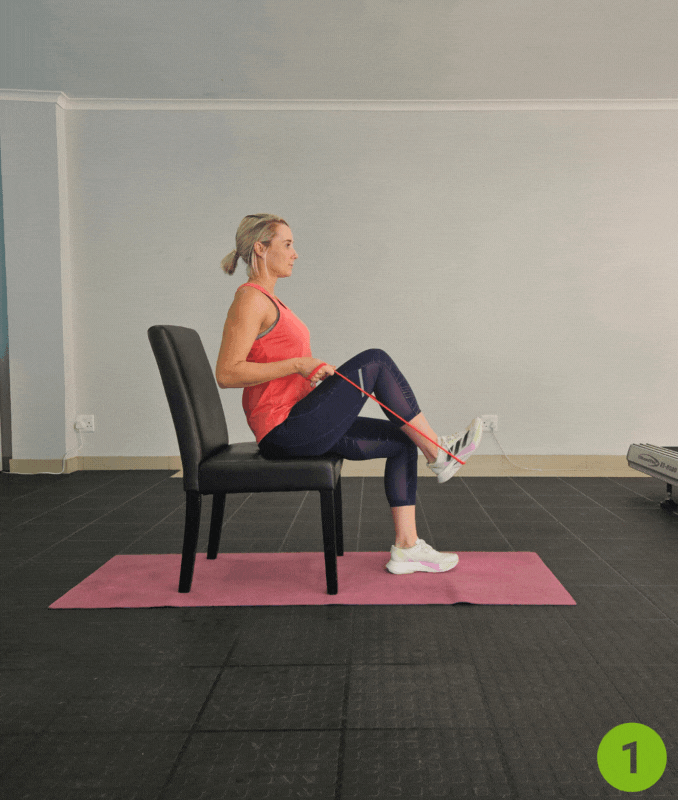
For this exercise, use a chair and a resistance band.
- Begin in an upright sitting position on a chair with your knees bent and feet flat on the floor.
- Maintain good alignment with your upper body.
- Lift and bend your right knee as you loop a resistance band around the bottom of your foot and hold the ends with both hands.
- Tighten your core and slowly extend your right leg forward against the resistance of the band.
- Hold the position for several deep belly breaths, in through your nose and out through your mouth.
- Return to the starting position and repeat the movement on the opposite leg.
Why it’s good: The leg press machine provides a controlled movement to target the quadriceps, hamstrings, and glutes, and it’s easier on the knees than leg extensions.
4. Step-Ups
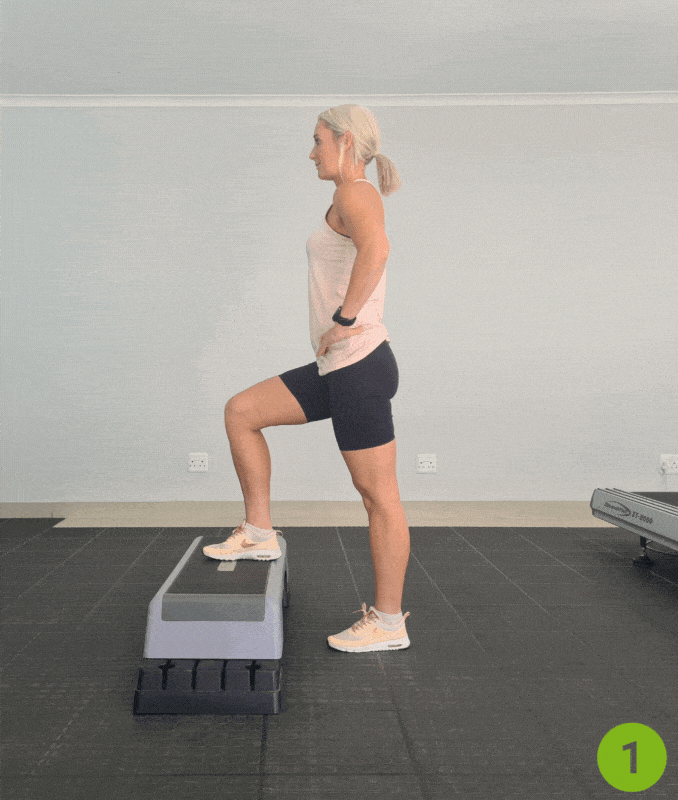
For this exercise, you can utilize the stepper, raiser, or stairs.
- Begin in an upright standing position in front of a stepper, with your feet hip-width apart.
- Maintain good alignment with your head, shoulders, hips, and legs. Place your hands on your hips.
- Engage your core muscles. Place your right foot on top of the stepper, then push yourself up onto it.
- Then slowly step down with your left foot.
- Perform the next step with the left foot leading first, alternating them throughout the exercise.
- Repeat the movement.
Step-Ups: Begin in an upright standing position in front of an elevated surface, like a bench or stepper, and step onto it with one leg. Then bring the other leg up to meet it. Step down one leg at a time and repeat.
5. Glute Bridges
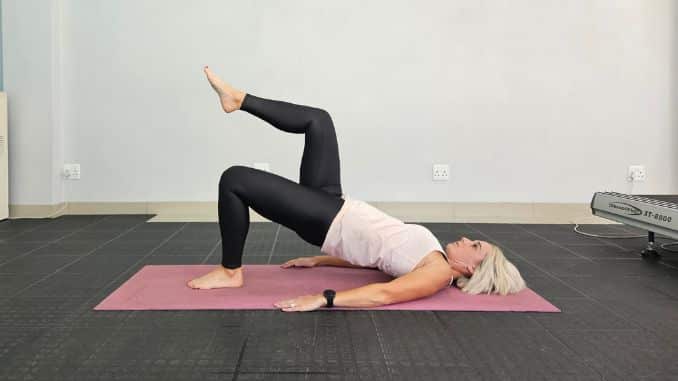
- Lie on your back on the floor with your knees bent and feet flat on the floor.
- Maintain good alignment with your upper body.
- Spread your arms at your side.
- Engage your core muscles and press through your heels to lift your hips towards the ceiling, forming a straight line from your knees to your shoulders.
- Hold the position for several deep belly breaths, in through your nose and out through your mouth.
- Relax and repeat the movement with 5 repetitions.
Why it’s good: This exercise works the quads, hamstrings, glutes, and core, improving overall leg strength while placing less stress on the knee joint compared to leg extensions.
Conclusion
Why do leg extensions hurt so much? Leg extensions are effective for strengthening the quadriceps but can lead to knee pain due to improper form, excessive weight, or the high level of stress placed on the knee joint. To prevent discomfort, focus on proper form, gradual progression, and knee flexion management [3].
Alternatives like squats, lunges, and leg presses can also target similar muscles with less stress on the knees. Always prioritize safety and listen to your body to ensure effective and pain-free workouts.
If you are suffering from back discomfort, click here to check out the Low Back Pain Solved program.
FAQ’s
Is it normal for leg extensions to hurt?
It’s not normal for leg extensions to hurt. Pain could mean you’re using too much weight or not following proper form. Focus on your leg muscles and make sure the machine is adjusted to protect your knee health. If the pain continues, try alternatives that are easier on your knees, like squats.
How do I stop my leg extensions from hurting my knees?
To stop knee pain during leg extensions, ensure the machine is properly adjusted to your body size, and avoid using excessive weight. Make sure your form is correct and focus on strengthening your quadriceps muscles. In some cases, blood flow restriction techniques can be used under professional guidance to help reduce strain on the knees. However, these techniques should be used with caution and under supervision.
Why do leg workouts burn so badly?
The burn you feel in leg workouts happens because your leg muscles are working hard and using up energy. As your muscles get tired, blood flow restriction occurs, causing that burning sensation, especially in your quadriceps muscles.
Is a 40 kg leg extension good?
Using 40 kg for leg extensions can be good if it feels challenging but doesn’t hurt your knees. Make sure you’re strengthening your quadriceps muscles without overloading your hip joint or knee health. Always listen to your body and increase the weight gradually as you build strength.

